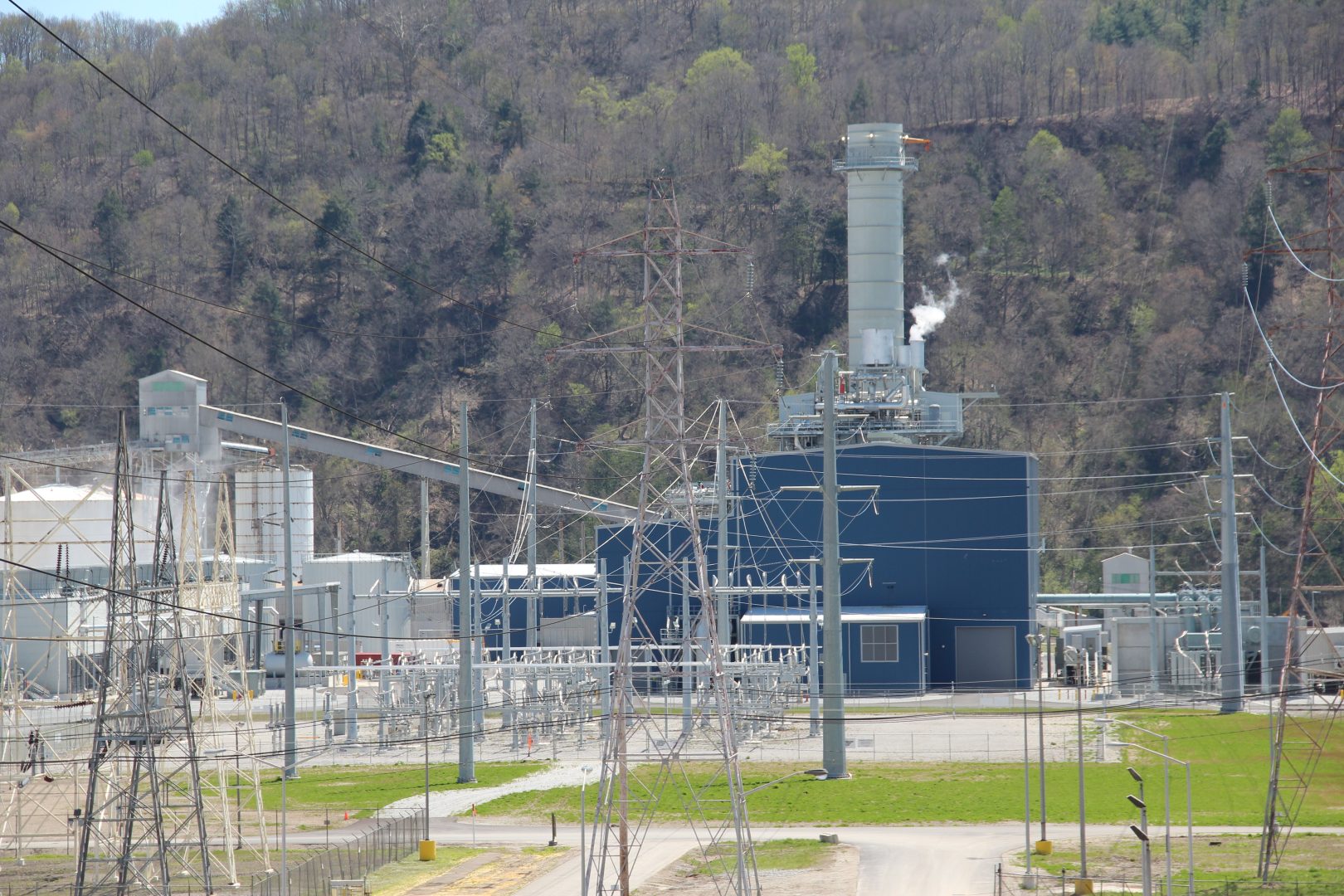
Long Ridge Energy Generation, in Hannibal, Ohio started burning hydrogen along with natural gas in this photo from April, 2022, sending electricity onto the mid-Atlantic grid.
Reid R. Frazier / StateImpact Pennsylvania


Long Ridge Energy Generation, in Hannibal, Ohio started burning hydrogen along with natural gas in this photo from April, 2022, sending electricity onto the mid-Atlantic grid.
Reid R. Frazier / StateImpact Pennsylvania

Reid R. Frazier / StateImpact Pennsylvania
Long Ridge Energy Generation, in Hannibal, Ohio started burning hydrogen along with natural gas in this photo from April, 2022, sending electricity onto the mid-Atlantic grid.
As Pennsylvania competes to become a federally-designated hydrogen hub, state lawmakers are looking into the role hydrogen can play in the state’s energy future.
Some see hydrogen as one solution to climate change, by using it in place of fossil fuels in sectors such as aviation and heavy industry.
The Biden Administration wants to promote clean hydrogen, but the definition of clean is so far unclear.
How hydrogen is made is important. Green hydrogen is made by splitting water molecules with renewable electricity. Blue hydrogen is made by separating the hydrogen and carbon atoms in methane, and trapping the carbon so it doesn’t enter the atmosphere.
Pennsylvania, with its large natural gas resources, is well-positioned to make blue hydrogen.
But environmental groups are pushing back. They say using fossil fuels to make hydrogen won’t help cut emissions at what scientists say is the speed needed to avoid catastrophic warming.
Robert Howarth, a Cornell University professor who studies hydrogen, testified at a recent hearing of the House Environmental Resources and Energy Committee and said he found only a marginal difference in the greenhouse gas footprints of blue hydrogen and gray hydrogen — which is made with natural gas without carbon capture.
“The greenhouse gas footprint of blue hydrogen is never better than simply burning natural gas,” Howarth said, when factoring in methane leaks and emissions generated by burning gas to power the process. He said it’s much harder to capture carbon emissions directly from burning.
Tom Murphy, senior managing director of strategic energy initiatives with the economic development-focused nonprofit Team Pennsylvania, said starting with hydrogen made from natural gas could put the state on the path to making the fuel with renewable energy.
But there’s a challenge, Murphy said, because communities are pushing back against using open space for renewable energy projects. He said the backlash against utility-scale solar is particularly strong.
Murphy, who previously directed Penn State’s Marcellus Center for Outreach and Research, also noted Pennsylvania’s gas industry has a very low methane intensity, or leak rate.
Team Pennsylvania is involved in one hydrogen hub bid for the Pittsburgh region, along with partners Shell and Mitsubishi Power.
A state law passed last year incentivizes the use of natural gas in hydrogen production.
Rep. Greg Vitali (D-Delaware) has introduced a bill to add stricter standards to the law to reduce potential emissions. It hasn’t yet come up for a vote.
StateImpact Pennsylvania is a collaboration among WITF, WHYY, and the Allegheny Front. Reporters Reid Frazier, Rachel McDevitt and Susan Phillips cover the commonwealth’s energy economy. Read their reports on this site, and hear them on public radio stations across Pennsylvania.
(listed by story count)
StateImpact Pennsylvania is a collaboration among WITF, WHYY, and the Allegheny Front. Reporters Reid Frazier, Rachel McDevitt and Susan Phillips cover the commonwealth’s energy economy. Read their reports on this site, and hear them on public radio stations across Pennsylvania.
Climate Solutions, a collaboration of news organizations, educational institutions and a theater company, uses engagement, education and storytelling to help central Pennsylvanians toward climate change literacy, resilience and adaptation. Our work will amplify how people are finding solutions to the challenges presented by a warming world.